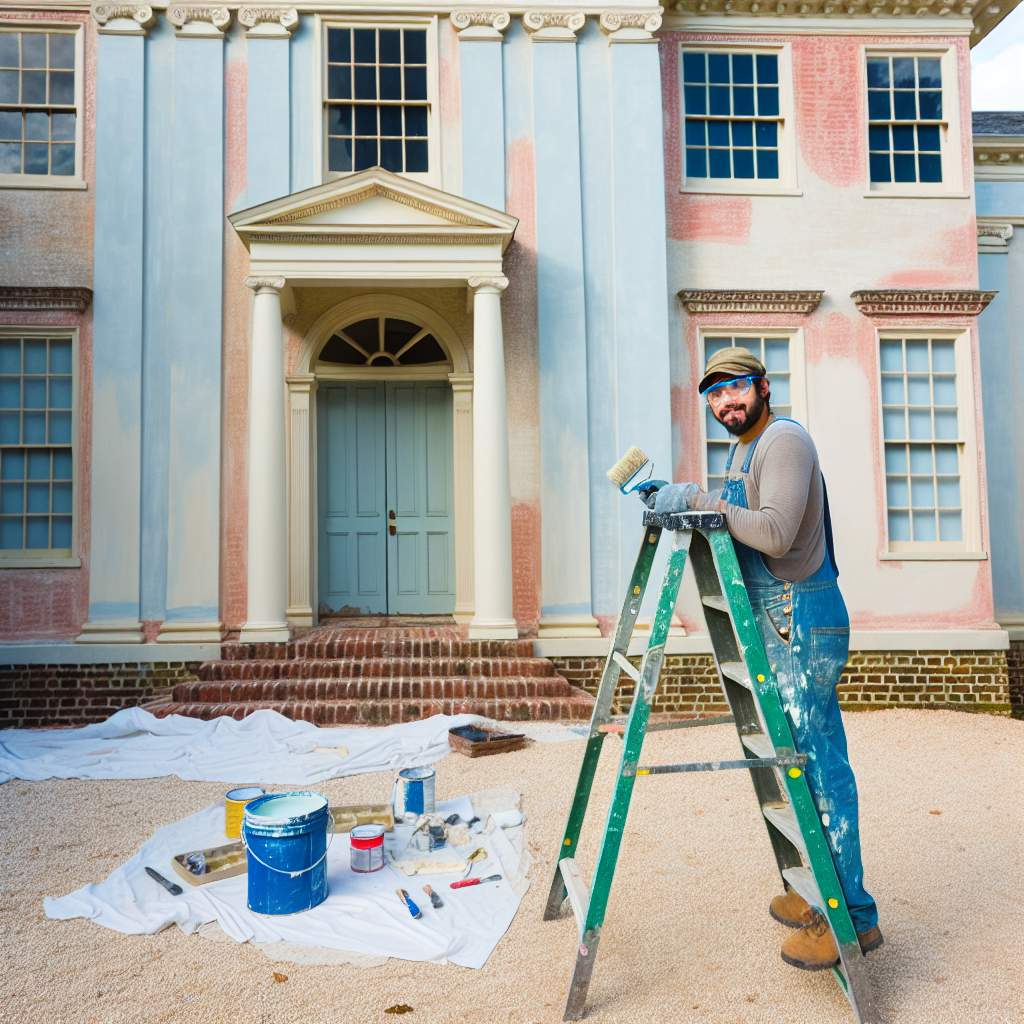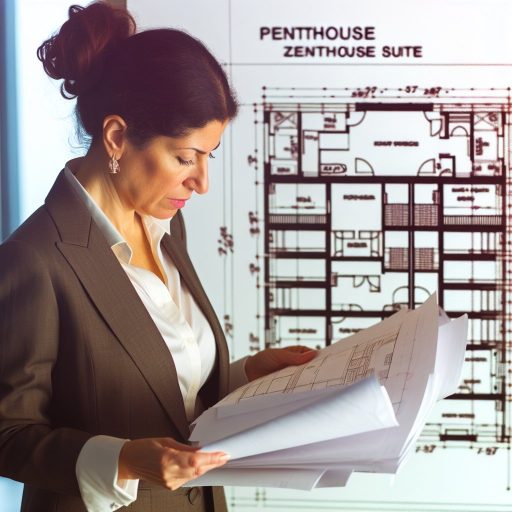Introduction to Historic Luxury Homes
Historic luxury homes hold significant cultural and architectural importance.
They represent a unique blend of history, craftsmanship, and design.
Preserving these homes is essential for maintaining cultural heritage.
However, this preservation comes with distinct challenges.
Importance of Preservation
Preservation helps maintain the historical integrity of these structures.
It allows future generations to appreciate past craftsmanship.
Moreover, historic homes contribute to community identity and pride.
They often serve as educational resources, showcasing architectural styles.
Additionally, preserved homes can stimulate local economies through tourism.
Challenges of Preservation
Preservation faces numerous challenges, including financial constraints.
Many homeowners struggle to fund necessary restoration projects.
Moreover, finding skilled craftsmen familiar with historical techniques can be difficult.
Weather exposure can also damage these homes over time.
Additionally, legal regulations may restrict modifications and repairs.
Understanding Preservation Techniques
An Overview of Standards and Guidelines
Preservation techniques for historic luxury homes require careful consideration.
Transform Your Real Estate Decisions
Unlock personalized real estate insights crafted just for you. Get actionable advice designed to amplify your success.
Get StartedEach process must adhere to established standards and guidelines.
The National Park Service outlines key principles for preservation efforts.
These principles help maintain the architectural integrity of historic sites.
Additionally, local preservation boards set specific guidelines for communities.
It is essential to follow these guidelines to ensure compliance.
Key Preservation Standards
Various standards exist to guide the preservation of historic properties.
The Secretary of the Interior’s Standards is a widely recognized framework.
This set of standards emphasizes the importance of retaining original materials.
Furthermore, it encourages minimal intervention during restoration projects.
Assessment of Historic Significance
Preservation begins with assessing the historic significance of a property.
This assessment often involves historical research and documentation.
Engaging with preservation experts can offer valuable insights.
The evaluation process identifies what features hold historical value.
Appropriate Techniques for Preservation
Preservation techniques vary based on the property’s specific needs.
Showcase Your Real Estate Business
Publish your company profile on our blog for just $200. Gain instant exposure and connect with a dedicated audience of real estate professionals and enthusiasts.
Publish Your ProfileRehabilitation focuses on returning a property to a useful state.
It balances preservation with contemporary needs and safety standards.
On the other hand, restoration aims to return the property to a specific historical period.
This method requires meticulous research and attention to detail.
Importance of Skilled Craftsmanship
Employing skilled craftsmanship is crucial in preservation projects.
Artisans with expertise in historic techniques bring authenticity to the work.
Using traditional methods helps ensure long-lasting results.
Moreover, sourcing appropriate materials supports authenticity.
Engaging the Community in Preservation Efforts
Community involvement is vital for successful preservation initiatives.
Local organizations often provide resources and support for projects.
Workshops and public meetings raise awareness about preservation efforts.
Additionally, engaging property owners fosters a shared sense of responsibility.
Assessing Historic Integrity: The Role of Historic Preservation Assessments
Understanding Historic Integrity
Historic integrity reflects a property’s historical significance and character.
This assessment involves evaluating original materials and craftsmanship.
Additionally, it examines the overall design and architectural style.
Importance of Preservation Assessments
Preservation assessments serve as essential tools for enforceable guidelines.
They determine the best practices for conservation and restoration.
Moreover, they help identify necessary repairs and potential upgrades.
Components of a Thorough Assessment
An effective assessment includes several key factors.
- Reviewing the building’s architectural style and elements.
- Evaluating historic materials and structural integrity.
- Assessing the property’s historical context and previous alterations.
Methods of Conducting Assessments
Preservation assessments utilize various methods and tools.
Visual inspections provide initial insights into the condition.
Additionally, historical research enhances understanding of the property.
Finally, condition assessments may require specialized testing.
Collaborating with Preservation Experts
Working with preservation specialists can enhance assessment accuracy.
These experts offer valuable knowledge and insights.
Their expertise aids in developing a comprehensive preservation strategy.
Uncover the Details: Analyzing The Historic Preservation Standards For Luxury Homes In The USA
Architectural Style and Materials
Identifying Key Features of Luxury Homes
Luxury homes in the United States often showcase unique architectural styles.
Common styles include Colonial, Victorian, and Craftsman.
Each style features distinct characteristics and materials.
Showcase Your Real Estate Business
Publish your company profile on our blog for just $200. Gain instant exposure and connect with a dedicated audience of real estate professionals and enthusiasts.
Publish Your ProfileColonial homes typically present symmetrical exteriors.
They often use brick or wood siding, creating timeless elegance.
Victorian architecture displays intricate details and vibrant colors.
These homes feature ornate trim, bay windows, and turrets.
Craftsman homes emphasize natural materials and hand-crafted details.
They usually incorporate wood beams and built-in furniture.
Understanding these styles assists in identifying luxury homes.
Material Selection and Sustainability
Choosing materials plays a crucial role in luxury home construction.
High-quality materials ensure durability and aesthetic appeal.
Commonly used materials include hardwood, stone, and slate.
Sustainable materials gain popularity for eco-conscious buyers.
Reclaimed wood offers both beauty and environmental benefits.
Furthermore, natural stone requires less maintenance compared to others.
Incorporating energy-efficient options is also essential.
Solar panels and geothermal systems enhance sustainability.
Thus, selecting the right materials elevates a home’s luxury status.
Preserving Architectural Integrity
Preservation techniques focus on maintaining architectural integrity.
Regular maintenance is vital for preventing deterioration.
Homeowners should inspect roofing, siding, and foundations.
Additionally, restoring original elements adds value.
Using period-appropriate materials in renovations preserves authenticity.
Expert craftsmen can replicate intricate details effectively.
Moreover, documenting the home’s history aids in restoration efforts.
Preservation maintains the cultural significance of historic luxury homes.
Consequently, homeowners can enjoy their investments for generations.
You Might Also Like: Mastering Sustainable Architecture Trends For Urban Luxury Residences In The USA
Restoration vs. Renovation: Balancing Authenticity with Modern Needs
Understanding Restoration
Restoration focuses on returning a property to its original state.
It emphasizes preserving historical integrity.
Experts often employ traditional methods and materials.
This approach maintains the character of the home.
Showcase Your Real Estate Business
Publish your company profile on our blog for just $200. Gain instant exposure and connect with a dedicated audience of real estate professionals and enthusiasts.
Publish Your ProfileRecognizing Renovation
Renovation involves updating a space for modern use.
Homeowners aim to improve functionality and comfort.
Renovations often use contemporary materials and designs.
This can sometimes compromise historical authenticity.
Finding the Balance
Balancing restoration and renovation is crucial.
Homeowners must weigh historical value against modern needs.
Consulting experts helps ensure informed decisions.
Finding skilled artisans can aid in maintaining authenticity.
Factors to Consider
- Historical significance of the home
- Condition of original materials
- Local preservation regulations
- Personal lifestyle needs and preferences
Best Practices for Preservation
Prioritize structural integrity during any project.
Use materials that match the home’s era for repairs.
Consider energy-efficient upgrades that don’t alter appearance.
Document changes to maintain a historical record.
Working with Professionals
Engaging architects familiar with historic homes is beneficial.
Interior designers can help merge styles effectively.
Collaborate with preservation societies for valuable resources.
Regularly communicate with all parties to stay aligned.
Explore Further: Discovering Evolving Trends In Gated Community Designs For Luxury Homes
Environmental Considerations: Sustainable Practices in Preservation
Understanding Sustainable Practices
Sustainable practices enhance the preservation of historic luxury homes.
They aim to minimize environmental damage during restoration projects.
Moreover, they promote energy efficiency and resource conservation.
Utilizing Eco-Friendly Materials
Choosing eco-friendly materials is crucial for sustainability.
Reclaimed wood has become a popular choice for flooring and beams.
Natural stone also adds timeless elegance while being environmentally sound.
Implementing Energy-Efficient Solutions
Energy-efficient solutions benefit both the environment and homeowners.
Installing solar panels offers renewable energy sources for historic homes.
Incorporating Native Landscaping
Native landscaping enhances both beauty and ecological balance.
This approach conserves water and supports local wildlife habitats.
Additionally, it reduces the need for chemical fertilizers and pesticides.
Engaging Local Artisans and Suppliers
Involving local artisans and suppliers fosters community and sustainability.
Showcase Your Real Estate Business
Publish your company profile on our blog for just $200. Gain instant exposure and connect with a dedicated audience of real estate professionals and enthusiasts.
Publish Your ProfileThese professionals often use traditional techniques that align with preservation goals.
Supporting local economies also reduces transportation-related carbon footprints.
Monitoring and Maintaining Historic Integrity
Regular monitoring helps maintain the structural integrity of historic homes.
Assessing conditions ensures timely repairs and the application of sustainable methods.
Furthermore, preserving historic integrity enhances property value over time.
See Related Content: The Role Of Architectural Design In Gated Communities For Luxury Living

Technology in Preservation: Innovative Techniques and Materials for Luxury Homes
Modern Restoration Techniques
Modern restoration techniques incorporate advanced technology to preserve luxury homes.
For instance, laser scanning captures detailed measurements of historic structures.
This technology creates accurate 3D models for restoration work.
Additionally, drone imaging provides aerial views for site assessments.
This method identifies necessary repairs without extensive scaffolding.
Sustainable Materials Choices
Sustainable materials play a vital role in preserving luxury homes.
Reclaimed wood adds character while reducing environmental impact.
Moreover, recycled glass and metal offer modern aesthetics while honoring history.
Using eco-friendly paints ensures indoor air quality and sustainability.
Advanced Climate Control Systems
Climate control systems are vital for preserving interiors of historic homes.
Smart HVAC technology regulates temperature and humidity levels effectively.
This system protects sensitive materials from deterioration.
Additionally, low-emission window films help regulate sunlight exposure.
Consequently, they prevent fading of artwork and furniture.
Integrating Smart Home Technology
Smart home technology enhances security and functionality in luxury homes.
Automated lighting adapts to the time of day, creating a welcoming atmosphere.
Moreover, security systems provide remote monitoring for peace of mind.
Home automation can also manage energy use to improve efficiency.
Collaboration with Specialists
Collaboration with preservation specialists ensures effective techniques are applied.
Experts assess historical significance and suggest appropriate materials.
Consultants keep homeowners informed about best practices in restoration.
This teamwork fosters a holistic approach to preserving luxury homes.
Training and Education
Ongoing training and education are crucial for preservation professionals.
Workshops on new technologies enhance skills in this specialized field.
Showcase Your Real Estate Business
Publish your company profile on our blog for just $200. Gain instant exposure and connect with a dedicated audience of real estate professionals and enthusiasts.
Publish Your ProfileFurthermore, certifications in sustainable practices ensure up-to-date knowledge.
Investing in education promotes a culture of excellence in preservation efforts.
Case Studies: Successful Preservation Projects of Historic Luxury Homes in America
Overview of Notable Projects
Several historic luxury homes have undergone remarkable preservation efforts in recent years.
These projects highlight effective techniques that maintain architectural integrity.
For instance, the restoration of the Eames House in California showcases innovative design approaches.
Simultaneously, the preservation of the Isabella Stewart Gardner Museum transforms public appreciation for history.
The Eames House Restoration
The Eames House, built in 1949, represents a significant work of modern architecture.
Preservation techniques focused on maintaining original materials like wood and glass.
Specialized craftsmen were hired to replicate damaged components accurately.
Environmental concerns guided the project, ensuring sustainable practices.
The Isabella Stewart Gardner Museum
This museum stands as a beacon of cultural heritage in Boston.
Restoration efforts included an extensive survey and long-term conservation planning.
Curators and architects collaborated to keep historical authenticity intact.
Furthermore, educational programs were introduced to enhance public engagement.
The Glass House Conservation
The Glass House, designed by Philip Johnson, underwent meticulous preservation work.
Experts addressed structural concerns while respecting the original design intent.
Innovative solutions ensured the home remains a vital cultural resource today.
This project exemplifies the harmony between modern preservation and design integrity.
Lessons Learned from Preservation Efforts
Successful projects share several key strategies and techniques.
- Engaging local communities fosters support and appreciation for historical sites.
- Employing skilled artisans ensures high-quality restoration work.
- Utilizing modern technology can aid in diagnosing and preserving materials.
- Developing clear communication among stakeholders enhances project outcomes.
Funding and Grants
Overview of Available Financial Resources
Funding historic luxury home preservation proves essential for successful projects.
Many financial resources support restoration and conservation efforts.
Government agencies, nonprofit organizations, and private foundations provide grants.
Federal Grants
The federal government offers various grant programs for preservation projects.
The National Park Service is a key resource for historic preservation funding.
Grants such as the Historic Preservation Fund help maintain historic properties.
Additionally, the Federal Tax Incentives program benefits homeowners.
State and Local Grants
Many states offer grants specific to historic preservation efforts.
State historic preservation offices often manage these funds.
Local municipalities may provide financial support through specific programs.
Researching regional options can uncover additional funding sources.
Showcase Your Real Estate Business
Publish your company profile on our blog for just $200. Gain instant exposure and connect with a dedicated audience of real estate professionals and enthusiasts.
Publish Your ProfileNonprofit Organizations
Many nonprofit organizations exist to support historic preservation initiatives.
Organizations like the National Trust for Historic Preservation provide grants.
These entities often aim to protect specific historic sites or neighborhoods.
Applying for these grants can enhance the financial viability of a project.
Private Foundations and Sponsorships
Private foundations often focus on historic preservation and community development.
Foundations such as the Getty Foundation provide targeted funding opportunities.
Engaging with local businesses for sponsorship may also yield support.
Building partnerships with the community can enhance project visibility.
Innovative Funding Techniques
Modern funding techniques include crowdfunding and social media campaigns.
Platforms like GoFundMe or Kickstarter allow community involvement.
Effective marketing strategies can encourage widespread contributions.
Additionally, building a strong storytelling component can attract interest.
Maximizing Financial Resources for Successful Preservation
Maximizing available funding streams enhances the chances of project success.
Combining resources from multiple sources can create a sustainable funding plan.
Ultimately, careful planning and research are vital for effective preservation efforts.
Community Involvement: Engaging Stakeholders in Preservation Efforts
Importance of Community Engagement
Community involvement is crucial for successful preservation efforts.
It fosters a sense of ownership among local residents.
Moreover, it promotes awareness of historical significance.
Identifying Stakeholders
Engaging various stakeholders strengthens preservation initiatives.
Local historical societies play a vital role in this process.
Real estate professionals can offer valuable insights into market trends.
Additionally, government agencies provide essential resources and support.
Organizing Community Events
Hosting community events raises awareness about preservation efforts.
Workshops can educate residents on restoration techniques.
Additionally, open houses showcase the beauty of historic homes.
These events also encourage participation in local preservation activities.
Building Partnerships
Forming partnerships enhances the effectiveness of preservation efforts.
Collaboration with local businesses can provide financial support.
Moreover, partnerships with educational institutions foster research opportunities.
Such cooperation leads to innovative preservation solutions.
Showcase Your Real Estate Business
Publish your company profile on our blog for just $200. Gain instant exposure and connect with a dedicated audience of real estate professionals and enthusiasts.
Publish Your ProfileGathering Feedback and Ideas
Soliciting feedback from the community is essential.
Surveys can help gauge public interest in preservation projects.
Community meetings encourage dialogue among stakeholders.
Therefore, their input can shape future preservation strategies.
Highlighting Success Stories
Sharing success stories inspires further community involvement.
These narratives showcase the impact of preservation efforts.
Moreover, they demonstrate the value of historic homes in the community.
Success stories can motivate residents to participate in preservation activities.
Additional Resources
The Greenbrier – Luxury Resort in West Virginia
The Potential of Our Decay: Cemeteries That Save the American …




